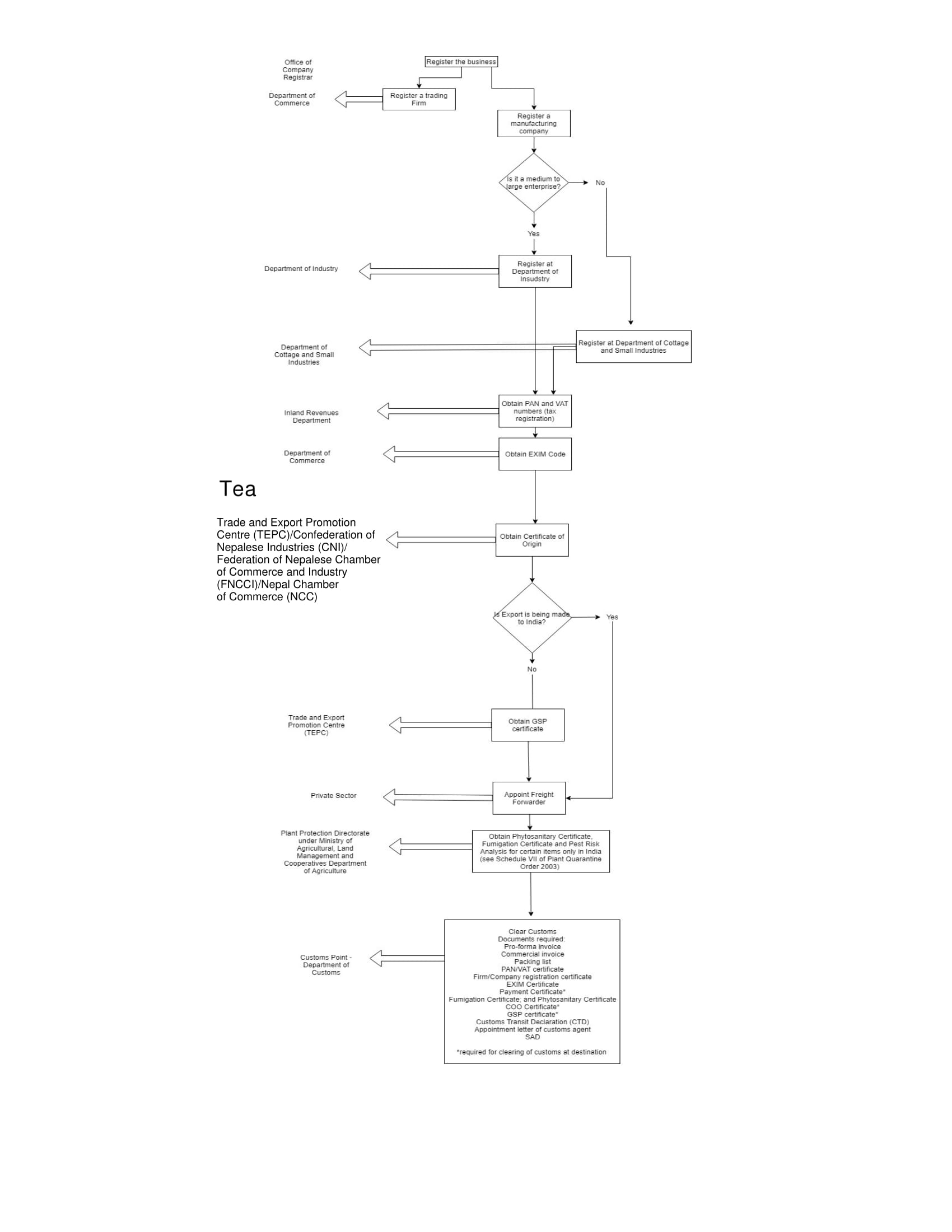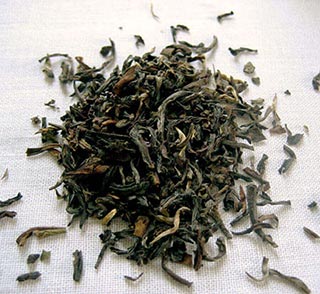Major Export Products
Tea
Nepal has a long history of Tea cultivation, initiated with the establishment of Ilam Tea Estate in the Hills of Ilam District in 1863. However, it is believed by historians that the first Tea bushes in Nepal were grown from seeds which were given as a gift by the Chinese Emperor to the then Prime Minister and de facto ruler of Nepal, Jung Bahadur Rana. It is believed that Tea plantation in Nepal started within the same decade when it was introduced in Darjeeling Hills of India.
Nepal grows mainly 3 types of tea, i.e. Camelia asamica and C. asamica spp lasiocalyx for CTC and Camellia sinesis for orthodox tea. Nepali orthodox tea is somewhat similar to Darjeeling Tea in its appearance, aroma and fruity taste. The reason for the similarity is that the eastern zones of Nepal, which are the main tea producing regions of Nepal, have more or less the same geographical and topographical conditions as the Darjeeling and are juxtaposed to each other.
However, Nepal's teas do stand apart from the Darjeeling Tea. Tea connoisseurs consider some of the Teas from Nepal to be much better than the Darjeeling Tea in its aroma, fusion, taste, and colour. The biodiversity, topography and organic matter richest soil place Nepal Tea in a unique position.
High altitude teas from Nepal have more flavour than low altitude teas. Green organic tea grown in High altitude are regarded as the best green teas in the World. Nepali tea bushes are young and are grown in high altitude. Tea bushes love warm and humid climate with plenty of rainfall. With a warm and humid climate, sufficient rain, and long daylight exposure to sunlight, Nepal is a country suitable for the cultivation of tea. Nepal's middle and eastern corridor between the Himalaya and Terai landscape is endowed with qualities of soil, climate, and topography ideal for the production of organic tea.
The abundance of fine hairy growth (pubescence) on the underside of the leaf, on the bud and sometimes even on the stalk gives Nepali orthodox tea its fine 'tippy' quality and precious flavors. Similarly, CTC Tea of Nepal is famous for its strong, bright and full-bodied liquor. Indeed, Nepal Tea is the symbol of quality from the Himalayas.
Production:
Nepal’s total tea production amounts to 23,821 MT annually. Tea is primarily grown in five districts in Eastern Nepal namely, Jhapa, Ilam, Panchthar, Dhankuta, and Terathum. Jhapa is by far the largest producer of tea accounting for more than 75% of Nepal’s tea produced followed by Ilam with produces around one-sixth of Nepal’s total tea production.
Source: Nepal Tea and Coffee Development Board
To find out information on country-specific tariff rates, check International Trade Centre’s MAcMAp. Put Nepal in exporting country field and select the destination country, exporting commodity and year to be exported to find the tariff rate. To find country-specific non-tariff requirements click here.
Click here to learn about EU requirements for tea import.
Trade Statistics
Related Trader
No trader Found
Related Measures and Procedures
Measures
| Name | Type | Agency | Description | Comments | Law | Validity |
|---|---|---|---|---|---|---|
| Certificate of Origin | Formality Requirement | Ministry of Finance | Section 21. Attachment of the documents with the declaration form: (1) A person importing or exporting goods pursuant to Section 18 of the Act, while submitting declaration form to the customs officer, shall submit the following documents including Certificate of Origin. | Comments | Customs Regulation, 2064 (2007) | 9999-12-31 00:00:00.0 |
| Generalized System of Preferences (GSP) | Certificate Requirement | Ministry of Finance | 21. Attachment of the documents with the declaration form:(1) As per section 18 of the Act, the person importing or exporting goods,while submitting declaration form to the customs officer, should submitfollowing documents(a)..(b)...(c) For exportation(1) Invoice(2) Packing list(3) Certificate of Origin(4) Banking document regarding payment procedure, in case of export to third country(5) Documents which are required as per prevailing law regarding the recommendation, license, or certificate from any institution. However Certificate of Origin shall not be mandatory for the export in which G.S.P. certificate is required. | Comments | Customs Regulation, 2064 (2007) | 9999-12-31 00:00:00.0 |
Procedures
| Name | Description | Category | View Procedure Detail with Relevant Forms |
|---|---|---|---|
| Certificate of Origin | Procedure to apply for Certificate of Origin | Procedure | View |
Product Workflow

